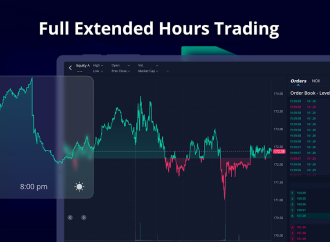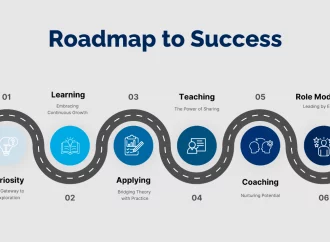In the world of finance, there’s a constant battle between traditional banking institutions and big tech companies. With billions of dollars at stake, both parties are vying for dominance in an ever-evolving landscape. But what is driving this push towards innovation? Is it the banking woes that have plagued the industry for decades or is
In the world of finance, there’s a constant battle between traditional banking institutions and big tech companies. With billions of dollars at stake, both parties are vying for dominance in an ever-evolving landscape. But what is driving this push towards innovation? Is it the banking woes that have plagued the industry for decades or is it simply a case of big tech winning out? In this blog post, we’ll explore the complex relationship behind the $500 billion advance and uncover what’s really going on beneath the surface. Get ready to dive into a fascinating discussion about money, power, and technology – let’s go!
What is the $500 Billion Advance?
When the banking sector began to experience difficulties in the early 2000s, tech companies saw an opportunity to fill the void. They started providing financial services that were faster, easier, and more convenient than traditional banks. This put pressure on banks to innovate or be left behind.
In response to this threat, banks started investing heavily in technology. They developed mobile apps, introduced online banking, and launched customer loyalty programs. But these efforts didn’t always pay off. In many cases, they actually made things worse by increasing complexity and confusion.
Now, as the pandemic has forced people to stay home and reevaluate their spending habits, it’s clear that the old model of banking is no longer sustainable. With customers increasingly turning to digital alternatives, banks are once again under pressure to innovate or risk being left behind.
The $500 billion advance refers to the amount of money that banks have set aside to cover losses from bad loans. This figure represents a significant increase from the $50 billion that was set aside in 2008. The advance is necessary because there are concerns that defaults on loans will increase as the economy continues to struggle.
So far, the $500 billion advance has not been used. But it’s important to remember that this figure is a worst-case scenario. If defaults begin to rise, this money will be needed to cover losses. For now, it’s a safety net that gives banks some breathing room as they
How did Big Tech Companies Benefit?
Big tech companies have been the biggest beneficiaries of the $2.3 trillion stimulus package signed into law by President Trump last week. The bill provides for $350 billion in small business loans, $425 billion in corporate tax breaks and $250 billion in unemployment benefits.
The bulk of the small business loans will go to businesses with fewer than 500 employees. But many big tech companies have already laid off workers or are planning to do so. So how will they benefit?
For one thing, the bill allows businesses to defer paying payroll taxes until 2021. That will save companies like Apple and Google billions of dollars. The bill also provides for a two-year moratorium on federal student loan payments. That will free up cash for companies like Facebook and Amazon, which have large numbers of employees with student debt.
The bill also includes a provision that will allow companies to write off the full value of any new equipment they purchase this year. That could be a boon for companies like Microsoft, which is planning to release a new line of Surface laptops later this year. And it could help Apple, which is reportedly working on a new 5G iPhone.
Finally, the bill includes a provision that allows businesses to carry back losses from 2018 and 2019 for up to five years. That means companies like Uber and Lyft, which have been unprofitable for years, could get substantial tax refunds.
So while the stimulus package is ostensibly designed to help small businesses, it will end
Who are the Losers in This Situation?
The losers in this situation are the small businesses that have been struggling to survive during the pandemic. They were counting on the PPP loans to help them get through this tough time, but now they’re being left out in the cold.
The other losers are the American taxpayers. This bailout is going to cost them a lot of money, and there’s no guarantee that it will actually help the economy. In fact, it could make things worse if the big banks use this money to speculate instead of lending it out to Main Street businesses.
Why is this Advance Important?
It’s no secret that banks are struggling. In the last few years, we’ve seen a number of big banks close their doors for good. But what’s driving this trend? Many experts point to the rise of big tech as a key factor.
Big tech companies like Amazon, Apple, and Google have revolutionized the way we live and work. They’ve also changed the way we bank. More and more people are using apps and online services to manage their finances. This shift has put pressure on traditional banks, who are struggling to keep up with the pace of change.
The $1 billion advance is a lifeline for banks. It will help them to invest in new technologies and stay competitive in the digital age. But it’s not just about survival – this advance is also an opportunity for banks to reinvent themselves and build a brighter future.
What Does the Future Hold?
The future of the banking sector is uncertain. Many experts have predicted that the industry will consolidate in the coming years as large banks buy up smaller ones. This could lead to fewer choices for consumers and less competition. Additionally, new technologies are changing how people bank, and this could lead to even more consolidation as traditional banks struggle to keep up. Some have predicted that we could see a future where only a handful of massive tech conglomerates control all banking services. Others believe that the banking sector will continue to evolve and adapt, with new players entering the market and offering innovative products and services. Only time will tell what the future holds for the banking sector.
Conclusion
The relationship between big tech firms and traditional banking institutions has been a complex one. With the rise of new technologies, banks have had to adapt and innovate in order to remain competitive in a rapidly changing market. We can see this shift reflected in the $500 billion advance that has been made by the world’s largest technology companies into financial services. It is clear that both sides are benefiting from this collaboration as they explore new opportunities together, but it remains to be seen how much of an impact this will have on the future of banking worldwide.





















Leave a Comment
Your email address will not be published. Required fields are marked with *